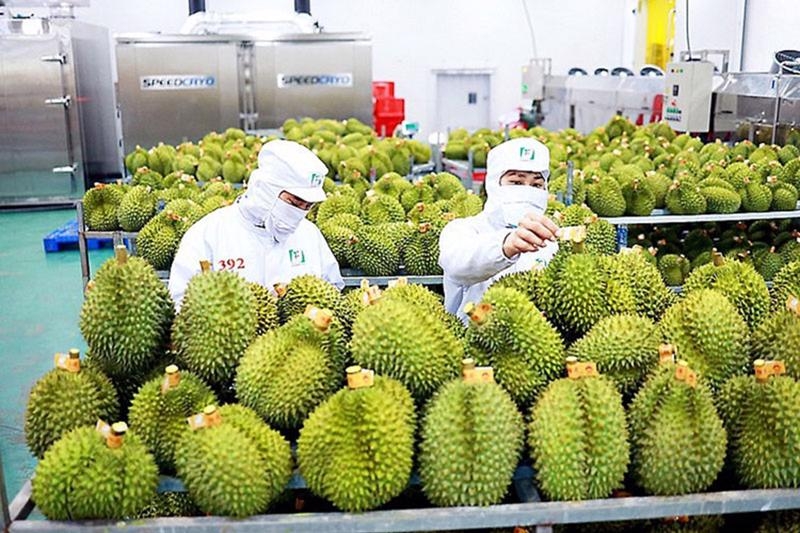Fruit and vegetable exports likely to fetch US$7 billion this year
VOV.VN - With fruit and vegetable exports soaring by over 31.5% to reach US$6.4 billion during the initial 10 months of the year, Vietnamese fruit and vegetable businesses are anticipated to rake in US$7 billion this year, according to the Vietnam Fruit and Vegetable Association (Vinafruit).
At present, the industry has fulfilled the target of earning between US$6 billion and US$6.5 billion set for this year, and exceeded the US$5.7 billion export earnings last year.
Fruit and vegetable exports to all markets enjoyed double digit growth in the reviewed period, with the highest growth recorded in markets such as Thailand, the Republic of Korea, Germany, and Canada.
Most notably, China remained the largest consumer of Vietnamese fruit and vegetables with US$4.2 billion, representing a rise of 38% compared to the same period last year and accounting for 47% of the total export turnover.
Thailand surpassed the United States to become the second largest importer of Vietnamese products, with turnover of US$225 million, up 87%.
The US, the Republic of Korea, and Japan also recorded double-digit growth rates.
Durian was a major contributor to the industry with revenue hitting US$3.1 billion, accounting for nearly 50% of total export turnover.
Dang Phuc Nguyen, general secretary of the Vietnam Fruit and Vegetable Association (Vinafruit), predicts that this year's durian export turnover could reach US$3.5 billion, up 45% compared to last year.
Insiders also attributed the industry’s export growth of over 30% to advantages in tropical climate and fertile land, as well as the application of scientific and technological advances in production activities, including VietGAP and Global GAP which have met the stringent requirements set in the world’s most demanding markets.
Furthermore, the country also enjoys advantages of close geographical location to the Chinese market, the world's largest fruit consumer market with an annual demand of up to US$20 billion, resulting in low logistics costs.
However, Nguyen pointed out a number challenges faced by businesses, noting that exports to distant markets such as the US and EU require good preservation technology.
Vietnam’s fruit and vegetable preservation technology remains limited, while infrastructure is not yet synchronized, leading to difficulties when it comes to transporting and preserving products, said the Vinafruit leader.
Therefore, he suggests that local firms improve product quality by complying with strict regulations relating to quality and origin traceability in order to make further inroads into fastidious markets.



